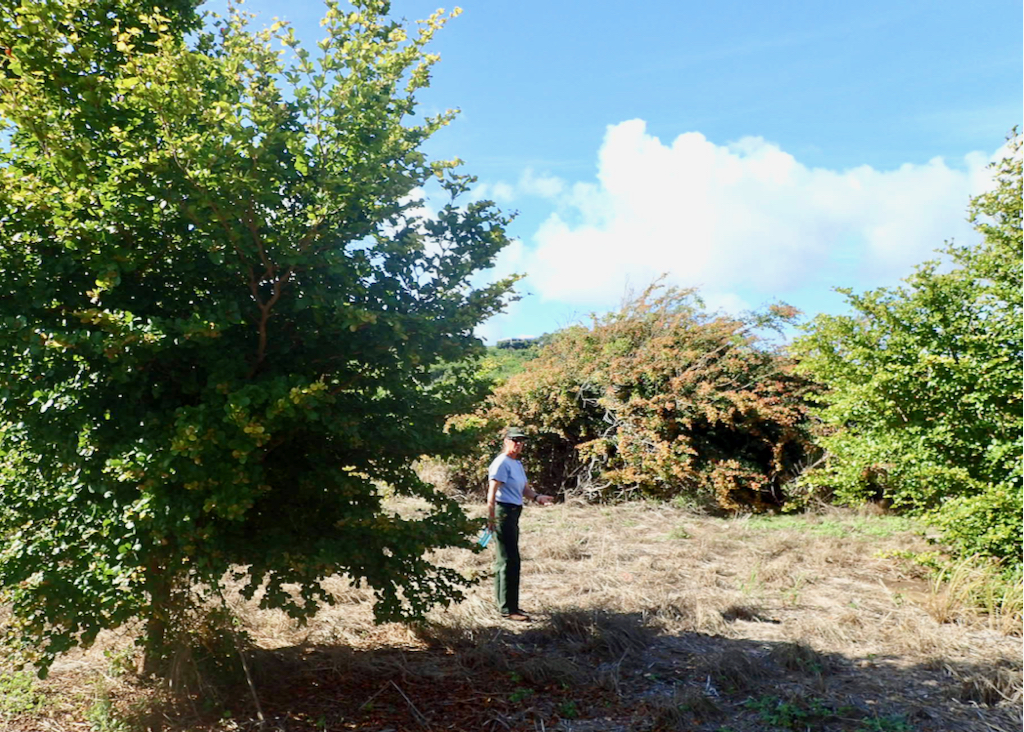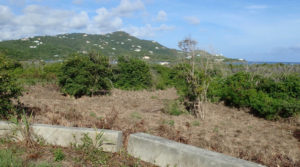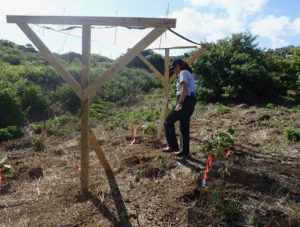
Starting in 2012, the National Park Service and federal partners with staff and volunteers have reintroduced native plants to about 72 acres of more than 1,000 acres owned by the local and federal governments, along with a few private landowners, to eventually increase public park space.
The parcel also contains a 14-acre bird sanctuary.
The replanting zone is on the east side of the Salt River Bay National Historical Park and Ecological Preserve that borders Estate Judith’s Fancy and includes the foundation for a hotel built in the 1960s and abandoned in the early ’70s, probably due to a lack of permits complying with the newly enacted Clean Water and Wetlands Protection Acts, according to Zandi Hillis-Starr, NPS Resource Management chief. The current work zone is around 40 acres.
The original stakeholders who initiated the 2012 exotic plant control program were the NPS, the U.S. Fish and Wildlife Service, Florida/Caribbean Exotic Plant Management Team and the NPS Youth Conservation Corps high school students.

To begin the restoration process, the Art Farm on St. Croix’s south shore was awarded a grant to grow more than 20 species and 1,000 plants, Hillis-Starr said.
Before planting could begin, non-native invasive plants had to be brought under control and/or removed. The biggest offenders were tan-tan and African guinea grass. The first was brought to the islands by the Danes, according to Hillis-Starr, and the second was transported on boats, probably slave ships.

Tan-tan and guinea grass can rejuvenate after a fire, unlike most native species, and are hard to eradicate. To beat them back, the areas are mowed, plants are uprooted when possible, and then broadleaf, target specific herbicides are applied after two to three weeks. Guinea grass doesn’t like shade, so once native plants grow tall enough, the grass dies back. No herbicides are used near roads or within 100 feet of the water’s edge, Hillis-Star said.
“We return and restore it from being the type of habitat where fire can sweep through and destroy an area,” she said.
The refurbished land now supports native species of various sizes, including Jamaican caper, man jack, black olive, pink cedar, agave, sage, cinnamon, bread and cheese, pigeon berry, buttonwood and sea grape.
Cassia is also a native bush but is not encouraged to grow. Yet, some of the native plants are growing from seed dropped by birds or delivered by the wind. The “volunteers” are welcome and help crowd out the non-native invasive species.

Remediation of the hotel, called the Virgin Grand at one point, began with the demolition of the three story, 23,000 square foot building. In 2009 – 2010, the V.I. National Guard, along with several stateside units, tore brick, concrete and pilings down with tractors and manpower.
No explosives were used, according to Hillis-Starr. Some of the pilings and rubble from the Christiansted Bypass were used as road base in the preserve.
“When doing compliance, you do your best to know the environment. We assumed we could do a full restoration,” even after discovering the hotel’s deep foundation that will always be part of the preserve.
The hotel’s concrete foundation remains and touches the bioluminescent bay, officially named Mangrove Lagoon. A building for education, the Coastal Stages Outpost was built and first used for the first Youth Ocean Explorers in July. Hillis-Starr said the area will be used for a variety of activities and hopes to engage high school and college students.





